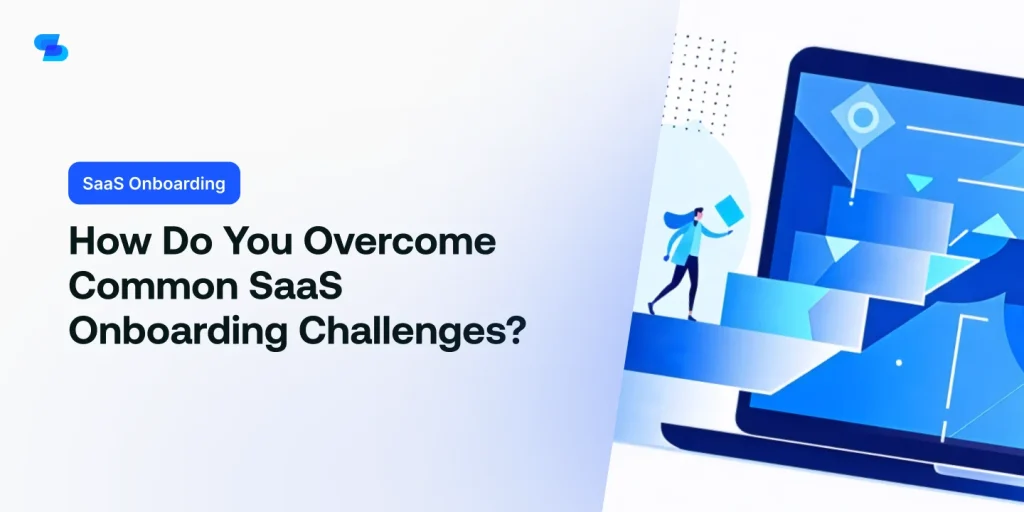As you endeavor to create a seamless onboarding experience for your SaaS customers, you’re likely no stranger to the challenges that come with it.
From unclear expectations to overwhelming complexity, the hurdles are many. But what if you could flip the script?
By putting your users’ needs front and center, you can craft an onboarding process that’s both personalized and efficient.
But how do you get there?
That’s the million-dollar question – and the answer lies in understanding what makes your users tick, simplifying the complex, and setting them up for early wins. But that’s just the beginning…
Understanding Your Users’ Needs
To craft a seamless SaaS onboarding experience, you must first put yourself in your users’ shoes and pinpoint the specific pain points, goals, and motivations that drive their behavior.
You need to understand what problems they’re trying to solve and what’s holding them back. This requires gathering data through user research, surveys, and feedback sessions. By doing so, you’ll identify patterns and trends that will help you tailor your onboarding process to their needs.
Next, you should create buyer personas that outline your users’ characteristics, pain points, and goals. This will help you develop a tailored onboarding strategy that addresses their specific needs.
For instance, if your users are small business owners, they might be short on time and resources. You can then design an onboarding process that’s quick, easy, and provides immediate value.
Simplifying Complex Onboarding Processes
One of the biggest hurdles in SaaS onboarding is steering through complex processes that can overwhelm and intimidate users. Therefore, it’s essential to break them down into manageable, bite-sized chunks that guide users seamlessly through each step.
To do this, you’ll need to identify the most critical tasks that users must complete during onboarding and prioritize them accordingly. Focus on creating a linear, step-by-step process that eliminates confusion and uncertainty.
You can also use visual cues like progress bars, checklists, or interactive tutorials to help users understand what’s expected of them and track their progress. Make sure each step builds upon the previous one, providing a sense of accomplishment and motivation to continue.
Providing Multichannel Support Options
When it comes to providing multichannel support options, you’ll want to cater to different user preferences by offering a range of channels that work for everyone.
This means giving users the flexibility to switch between channels – such as phone, email, chat, or social media – without disrupting the support experience.
Channels for Every User
By catering to diverse user preferences, you can guarantee that every customer receives support through their preferred channel, whether it’s email, phone, live chat, or social media. This approach acknowledges that users have different communication styles and preferences, ensuring that no one is left behind.
For instance, some customers might prefer the convenience of live chat for quick questions, while others might prefer the thoroughness of email for more complex issues.
To implement multichannel support, you’ll need to integrate various channels into your support system. This might involve investing in tools like helpdesk software, live chat platforms, and social media management tools.
You’ll also need to train your support team to handle inquiries across multiple channels, ensuring consistency in tone, language, and resolution.
Seamless Transition Between Channels
You’ve successfully implemented multichannel support, but now it’s time to make certain that your customers can seamlessly shift between channels without feeling lost or frustrated, a critical aspect of providing a cohesive onboarding experience.
To achieve this, guarantee that your support agents have a unified view of customer interactions across all channels. This can be done by integrating your support tools and platforms, allowing agents to access customer conversation history and context easily.
When a customer shifts from one channel to another, they should be able to pick up where they left off without having to repeat themselves. To make this happen, implement a ticketing system that tracks customer conversations and updates in real-time. This way, support agents can quickly access the customer’s previous interactions and respond accordingly.
Additionally, provide clear instructions and guidelines for customers on how to shift between channels. This could be in the form of a knowledge base article or a prompt within the support interface.
Proactive Support Engagement
Your customers expect to engage with your support team through their preferred channels, so offer them multiple options, such as email, chat, phone, and social media, to proactively address their onboarding concerns and questions. This allows them to reach out to you whenever and however they want, reducing friction and anxiety during the onboarding process.
Make sure your support team is equipped to handle queries across all channels, ensuring consistency in responses and resolutions.
Implement a ticketing system that integrates with your multichannel support options, enabling your team to track and manage customer interactions seamlessly. This will also help you identify patterns and areas for improvement in your onboarding process.
Setting Realistic Expectations Early
Establishing a clear understanding of what your SaaS onboarding process can realistically achieve sets the tone for a successful customer journey. You must communicate the scope of your onboarding process to new customers from the get-go. This means being transparent about what they can expect to achieve during onboarding, how long it’ll take, and what’s required from them. By doing so, you’ll manage their expectations and prevent frustration or disappointment down the line.
To set realistic expectations, you should outline the key objectives and milestones of your onboarding process. Identify the most critical features or functionalities that customers need to grasp to get value from your product. Be honest about the level of effort and resources required from customers to complete onboarding.
You should also provide a clear timeline for when they can expect to see results or achieve specific goals. By setting realistic expectations early, you’ll build trust with your customers, reduce churn, and increase the likelihood of long-term success.
Creating Interactive Tutorials and Guides
By incorporating interactive tutorials and guides into your onboarding process, you can break down complex features into manageable, bite-sized chunks that customers can easily follow and understand.
This approach helps to reduce overwhelm and anxiety, allowing customers to focus on learning your product.
To create effective interactive tutorials, start by identifying the most critical features that customers need to learn.
Then, design step-by-step guides that demonstrate how to use each feature, using screenshots, videos, or interactive simulations.
Make sure to keep each tutorial concise and focused on a single task or concept.
You can also use branching scenarios or decision trees to create a more personalized learning experience.
Additionally, consider using interactive elements like hotspots, tooltips, or hover-overs to provide additional context and support.
Encouraging Early Wins and Feedback
To boost customer motivation and engagement, recognize and celebrate early wins, no matter how small, as they occur during the onboarding process. This helps build momentum and reinforces the idea that your SaaS solution is providing value.
You can do this by acknowledging milestones achieved, offering badges or rewards, or simply sending a congratulatory message. The key is to make it personal and timely, so the customer feels seen and appreciated.
As you celebrate early wins, ask for feedback to understand what’s working and what areas need improvement. This shows customers that you value their input and care about their experience.
You can use surveys, Net Promoter Score (NPS) tracking, or even a simple email to gather feedback. Make sure to respond promptly to any concerns or suggestions, demonstrating that you’re committed to continuous improvement.
Personalizing the Onboarding Experience
As you tailor your onboarding process to individual customers, you’ll find that personalization greatly boosts engagement and reduces churn, since it allows you to address specific pain points and cater to unique needs. This is especially important when you’re dealing with a diverse customer base, each with their own set of requirements and expectations.
To personalize the onboarding experience, start by segmenting your customers based on their industry, company size, or job function. This will enable you to create customized onboarding paths that speak directly to their needs.
Next, leverage data and analytics to identify patterns and behaviors that indicate where customers might need extra support. This could include sending targeted tutorials or offering one-on-one consultations to help them overcome specific hurdles.
You can also use customer feedback and survey responses to fine-tune your onboarding process and make it more relevant to their goals. By taking a personalized approach, you’ll be able to build stronger relationships with your customers, increase their chances of success, and ultimately drive long-term retention.
Continuously Gathering Feedback and Iterating
You’ll need a system in place to continuously gather feedback from customers, whether it’s through regular check-ins, surveys, or user testing, to gain a deeper understanding of their pain points and identify areas for improvement. This feedback is vital in refining your onboarding process to better meet their needs.
By regularly collecting feedback, you’ll be able to pinpoint specific pain points and make targeted improvements. For instance, if multiple customers are struggling with a particular feature, you can prioritize updates to make it more user-friendly.
It’s essential to act on this feedback promptly, so customers see the value in providing it. This will encourage them to continue sharing their thoughts and opinions. By closing the loop with customers, you’ll build trust and demonstrate a commitment to their success.
To make the most of customer feedback, make sure to analyze and prioritize it regularly, and communicate changes and updates back to customers. This continuous cycle of feedback and iteration will help you refine your onboarding process, leading to higher customer satisfaction and retention rates.
To Wrap Up
By implementing these strategies, you’ll be well on your way to overcoming common SaaS onboarding challenges.
You’ll create an experience that resonates with your users, sets them up for success, and builds trust.
Remember, onboarding is an ongoing process that requires continuous improvement.
Stay focused on your users’ needs, and don’t be afraid to iterate and refine your approach.
With time and effort, you’ll see higher customer satisfaction and reduced churn rates, leading to a more successful SaaS business.

